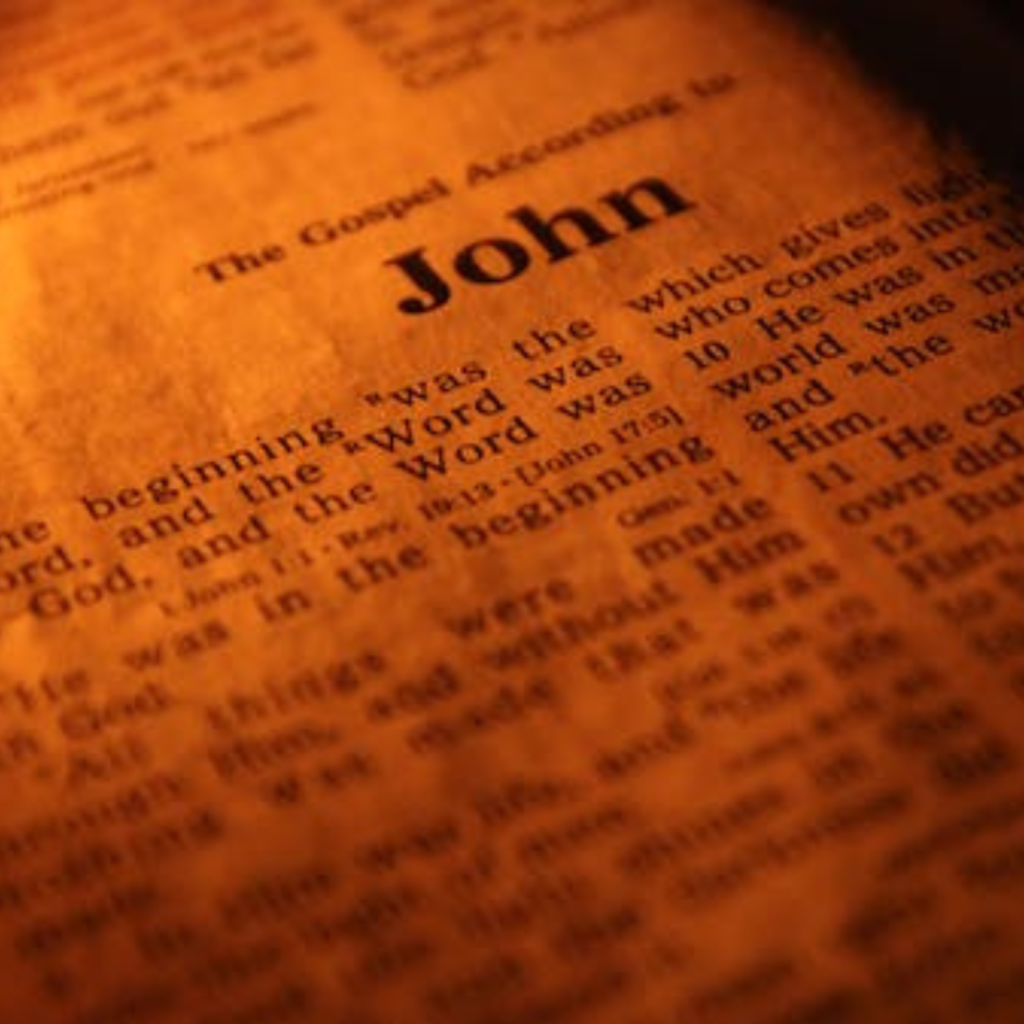The first chapter of your story is arguably the most important. After all, if you don’t hook your readers in from the beginning, it’s going to be much harder to win back their loyalty later on. So, today, we’re going to be taking a look at how to write a first chapter that will make your audience want to keep reading.

There’s one main example I’m going to be using from the Bible, and that is John 1. Now, of course, the chapter divisions aren’t original to the book, but this first section does give us a great example of how to write a first chapter.
Depending on how long or short your story is—as well as the genre—your first chapter might only allude to some of these elements, rather than introduce them. However, all of these points should at least be foreshadowed during the first chapter. Let’s take a look at some of the things to include:
- A good first line
Your story could begin many different ways… with description, dialogue, in medias res (or “in the middle of things”). However, you always want to make sure that your first line is going to hook your readers into the story.
In some way, you need to intrigue them enough that they will want to keep reading to learn more. A good way to do this is to begin with a line that makes your readers ask questions.
In John 1, it begins with “In the beginning was the Word, and the Word was with God, and the Word was God.” This sparks a lot of questions, but the main one is, “Who is this talking about?” Of course, as we keep reading, we find that it’s describing Jesus.
- Introduce the MC
The protagonist is the most important person in the story (with the antagonist being a close second), so you’ll want to introduce them as early on as possible. There are many things about the protagonist that can be introduced, by try to keep it simple. Focus more on the things that matter… a simple physical description if necessary, a demonstration of their personality, perhaps a mention of their occupation, etc.
John’s description of Jesus in John 1 continues for about 17 verses, introducing Him, His nature, and His character before finally revealing His name… Jesus Christ.
- Introduce the MC’s Want/Goal
Every character has an agenda, and your protagonist should have the most important agenda of all. Since their Want or Goal is going to play a huge part in the story, it’s good to introduce it early on. Now, depending on the nature of your story, you might only need to allude to it. But, either way, make sure its presence is made known.
Much of Jesus’ introduction during the first several verses of John is about His mission here on earth. He came as a light to shine in the darkness—He came to rescue lost sinners.
- Introduce the MC’s Lie/Truth
Just as each character has an agenda, they also have a reason behind that agenda. And this belief is also going to play a significant role in the story, so it needs to be introduced early on. Both the Want/Goal and the Lie/Truth are a part of who the protagonist is as a person, so the introduction to these elements can often be included in the MC’s introduction.
In John 1, Jesus’ Truth—which is the ultimate Truth—is introduced almost as soon as He is. Since, as Jesus testifies later in John, He is, “The way, the truth, and the life,” it’s fitting that the Truth should tie directly into His character. This Truth is the fact that the world has rebelled against God, and they must turn back to Him in repentance in order to have a right relationship with Him and a home in Heaven.
- Foreshadow the Ghost/Backstory
The Ghost or Backstory is one of the things that doesn’t need to be completely introduced during the first chapter. After all, it usually makes for a good plot reveal or twist later on. However, you should probably at least foreshadow it.
A brief sum of Jesus’ “Backstory” is given in John 1… how He made the world, was rejected by it, then came to earth to save them. This is one of the stories where the Ghost or Backstory isn’t really used as a plot reveal, so it’s good to introduce it early on.
- Introduce the Theme/foreshadow the main conflict
While the MC won’t really be introduced to the main conflict until the Inciting Event—and won’t be fully immersed in it until the First Plot Point—it does need to be foreshadowed. Depending on the nature of the Theme, you could weave it into the Ghost/Backstory, or even into the MC’s introduction. But, no matter how subtle, the main conflict needs to be present during the beginning of the story.
In John 1, we find the main conflict alluded to right off the bat when it says, “The light shineth in darkness; and the darkness comprehended it not.” This allegorical statement is clear while leaving room to be expounded upon later on in the book.
- Introduce other supporting characters
Not every supporting character needs to be introduced during the first chapter. However, at least some of them should be present. When introducing these characters, remember their own personalities, quirks, hobbies, Wants/Goals, Lies/Truths, Ghosts/Backstories in order to properly establish them in the story and tie them into the Theme.
John the Baptist is actually mentioned by name in John 1 even before Jesus is. Since he technically came first to prepare the way, it’s a great way to build up to Jesus’ introduction. Several of Jesus’ future disciples are also mentioned, including Andrew, Peter, Philip, and Nathanael.
- Introduce the setting
Depending on the story, the setting might not play a significant role in it. However, you do want to give at least a small description to help readers ground themselves in the story. You could also focus more on a certain part of the setting (like the scenery, the culture, or the people).
In John 1, the main part of the setting that’s introduced is the people and their attitude toward God and Jesus. Later come references to the culture (such as when the Law of Moses is mentioned), as well as specific locations (like Jerusalem, Bethbara, Jordan, etc.)
- End with another hook
When you finish up the events of the first chapter, your work is by no means complete. Even though you successfully hooked your readers at the beginning, you’ll want to hook them again so they keep reading into the next chapter. Again, the nature of this hook is up to your style and genre, but make sure that it does its job.
In John 1, the chapter ends with a great hook. Nathanael has just met Jesus and is in awe of His wisdom. But Jesus tells him, “Because I said unto thee, I saw thee under the fig tree, believest thou? thou shalt see greater things than these.” Though these lines would be enough, there is one more teaser: “Verily, verily, I say unto you, Hereafter ye shall see heaven open, and the angels of God ascending and descending upon the Son of man.”
Using all of these elements, you’ll be well on your way to creating an awesome first chapter. Make sure to check out my blog post on the Positive Change Arc Hook here to learn more, and stay tuned for a post on the Flat Arc Hook in a few weeks.
Comment below what makes the first chapter of your favorite book so memorable!

